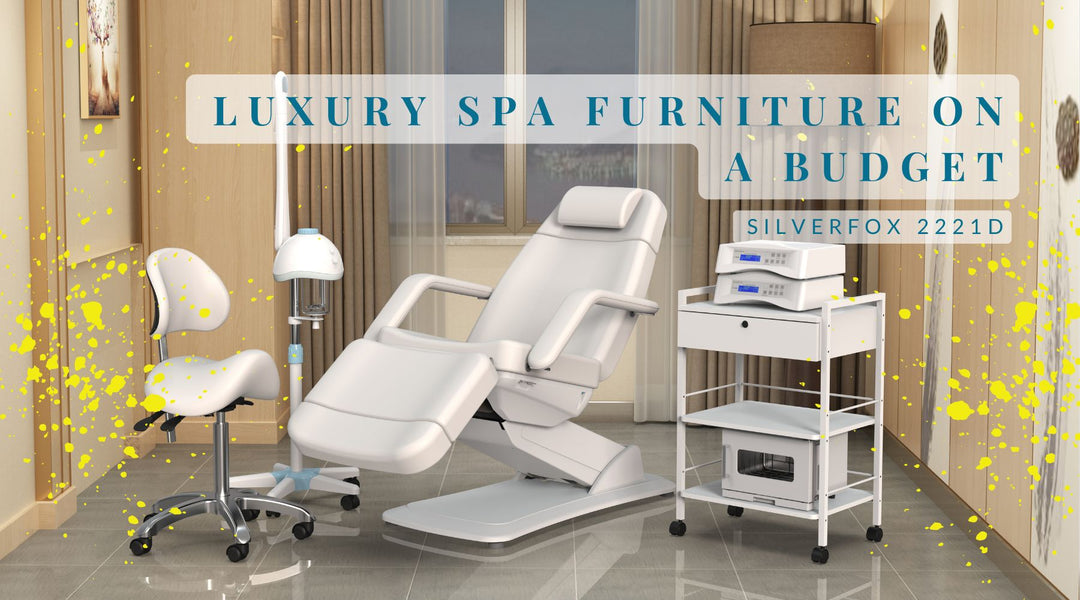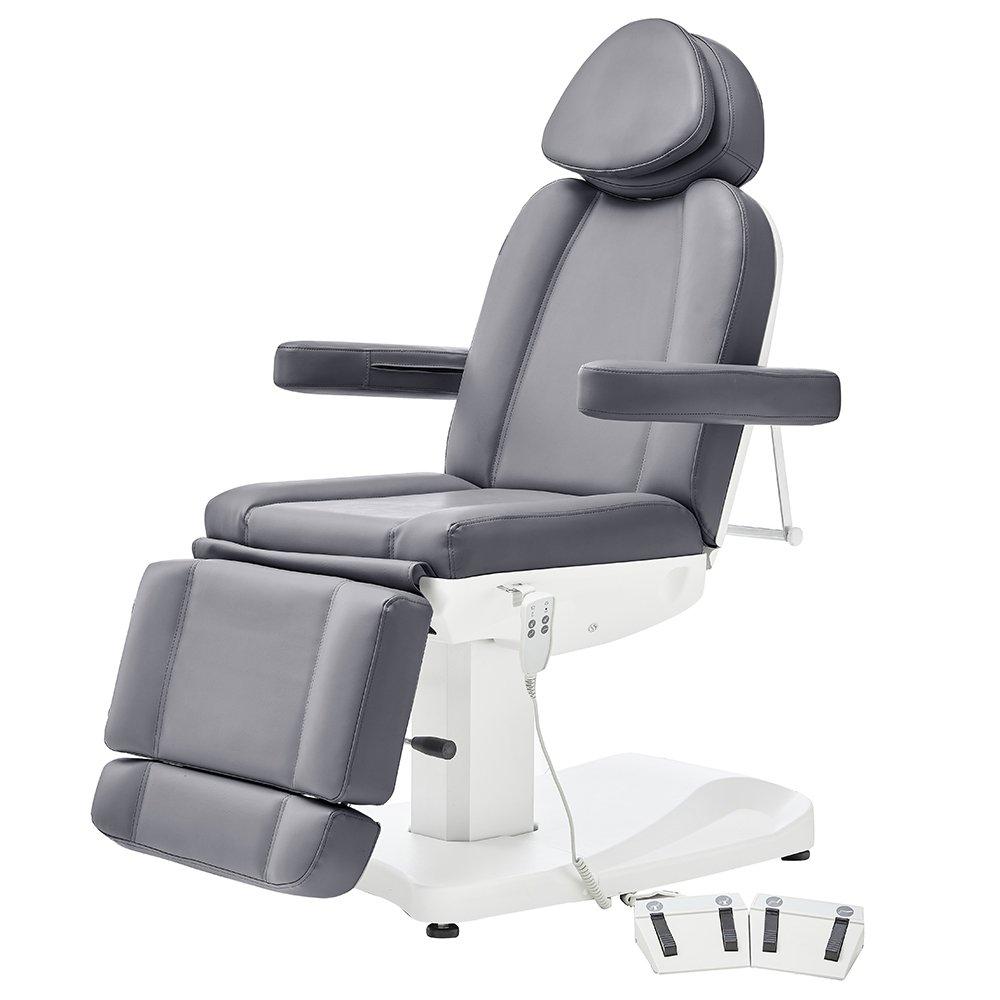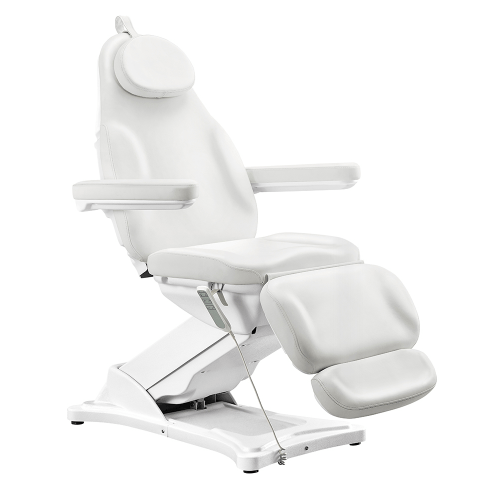How to Clean and Sanitize Your Electric Facial Massage Bed (Step by Step)

Table of Contents
- How Often Do You Need to Clean Your Facial Massage Bed?
- Things to Gather Before Cleaning An Electric Facial Bed
- The Quick Clean
- Specialized Wipes
- The Deep Clean
- Vinyl Restoration
- What Precautions Should We Take Before Cleaning An Electric Massage Bed?
- Pick Safe Products for Cleaning
- Unplug the Bed
- Inspect for Damage
- Read Manufacturer's Guide
- Wear Gloves
- Ventilate
- Getting Started: Let’s Clean an Electric Facial Massage Bed
- Stage 1: Pre-cleansing
- Stage 2: Deep Cleansing
- Stage 3: Disinfection
- Some Maintenance Tips You Must Know
Poor hygiene can easily affect your client’s skin. Apart from this, it might ruin vinyl, padding, frame, and other components of your massage bed.
So basically, it might cost you your business!
To save yourself from that sort of misery, go through this blog and you’ll know what’s the right way to clean and sanitize an electric facial massage bed.
How Often Do You Need to Clean Your Facial Massage Bed?

There’s no one word answer for how often you need to clean a massage bed. If you're booked back-to-back all day, it clearly means you need to clean more than someone who has only got two sessions a week.
Every time a session ends, give the bed a thorough wipe down. This applies even if you have used a sheet. In this way you can remove any sweat, makeup smudges, or invisible bacteria.
But don't just clean on top. Make sure you deep-clean too at least once a week.
Tip #1: Check regularly for loose bolts or other problems so that the bed stays safe and sturdy.
Things to Gather Before Cleaning An Electric Facial Bed
Before getting started, preparation is important. It's much easier to jump right in if you know what you need is right at hand. No one wants to be halfway through a clean and realize they're missing something.
Here's what you'll need:
- Mild cleanser
- Water
- Microfiber cloths or soft-bristled brush
- Disinfectant spray or wipes
- Vacuum
The Quick Clean
Quick cleans between customers is all about a little soap and water. In addition to this, a microfiber cloth or paper towel does the trick for wiping. This works great if your main focus is surface-level cleanliness, hitting visibly dirty areas as well as those where your client might come into direct contact.
Specialized Wipes
Wipes for facial massage beds do wonders for removing lotion, sweat, and oils. Not only this, it always makes your table look like it has never been used before. Some even offer a pleasant scent once applied.
Believe it or not, nobody likes walking up to an empty room and smelling what somebody just left behind.
The Deep Clean
Are you planning to give your table a good scrub? Use a mild cleaner mixed with water. This helps you clean all areas including those which are hard-to-reach surfaces such as underneath and the legs. While deep cleaning, it’s not a bad idea to check if there are any problems like cracks or loose bolts.
Vinyl Restoration
Is your vinyl becoming dull in appearance? Use a vinyl restorative solution. It can even make your vinyl look lively, increasing its lifespan to a great extent.
What Precautions Should We Take Before Cleaning An Electric Massage Bed?
Pick Safe Products for Cleaning
You have a lot of choices when picking your products, but also some "no-go zones." Do not go with alcohol, chlorine, or citrus-based cleansers. They'll break down the vinyl on your bed and cause it to crack or bubble.
Similarly, not all cleaners are suitable for different materials. Some cleansers may be too harsh for vinyl and safe for metal parts. Always match the cleaner with what it's being used on.
Tip #2: Before you use any new cleaning product, test it on a small hidden surface first. If anything goes wrong, you saved the bed. Otherwise, you’ll know it’s safe to use.
Unplug the Bed
Unplug the bed from its socket to avoid any accidents. This also gives you a chance to check the cable for any wear and tear.
Tip #3: Be careful around any electronic controls or interfaces. To clean them, use a wet cloth to wipe down. Don’t spray a cleaner right on it. This way, you can keep the water out of electrical areas.
Inspect for Damage
Before you start cleaning, check your spa bed for any signs of damage. For instance, you might notice cracks in its vinyl and loose bolts as well.
Read Manufacturer's Guide
Before you do anything else, look at your manufacturer's cleaning guideline. They often have specific recommendations and warnings about sensitive parts of your bed, such as the motor or electrical settings.
Wear Gloves
Even if you are using a mild cleaner, it's always good to wear gloves. This saves your skin from irritation.
Ventilate
The room must be well-ventilated, especially in case of strong disinfectants. The fumes from some cleaners can be dangerous when inhaled. In such situations, you need to put on a mask.
Getting Started: Let’s Clean an Electric Facial Massage Bed
After collecting all the cleaning supplies and taking necessary safety precautions, here comes the real work. But before that, understand that it’s not a one-step process. It involves pre-cleaning, deep-cleansing, and post-cleaning stages.
So let's begin:
Stage 1: Pre-cleansing
Remove Visible Debris
Take a vacuum or brush off any stray hair or other debris that has gathered over the surface as well as crevices or cracks.
Prepare the Cleaner Mixture
Mix together a small amount of weak soap (max of 10%) with warm water (not above 120° Fahrenheit). You can also use PH-neutral soaps for oils.
Stage 2: Deep Cleansing
Apply Cleaner
Soak a microfiber cloth or a soft-bristled brush in the cleaning mixture. Scrub the surface of your bed gently. Pay attention to dirt or stains, particularly on the frame, vinyl, or padding.
Rinse & Dry
After scrubbing, rinse your cloth or brush to ensure that there’s no soap left. After that, use a clean cloth to dry the bed. You can also let it air dry outside, but make sure it’s completely dry because that’s important for the next step.
Stage 3: Disinfection
Apply Disinfectant
Put some disinfectant on your bed’s surface. Don’t oversaturate upholstery because this would eventually ruin it.
Rinse & Dry
Apply the disinfectant, leave it for a while, and then rinse it off with clean water. Again, let this dry as well.
Some Maintenance Tips You Must Know
- Ensure that you tighten bolts every week and look out for signs of ageing
- Use a vinyl restoration solution to restore an aged vinyl cover
- Stick to mild PH-neutral soaps avoiding harsh chemicals
- Never forget to clean the underbelly part during the deep cleansing process
- Keep moving parts well-lubricated as per guidelines given from your manufacturers
- Observe manufacturer’s weight restrictions not to damage it
- Replace worn-out parts immediately if noticed
- Have extra microfiber cloths, brushes, replacement parts as misplacing a single tool might stop the entire process





